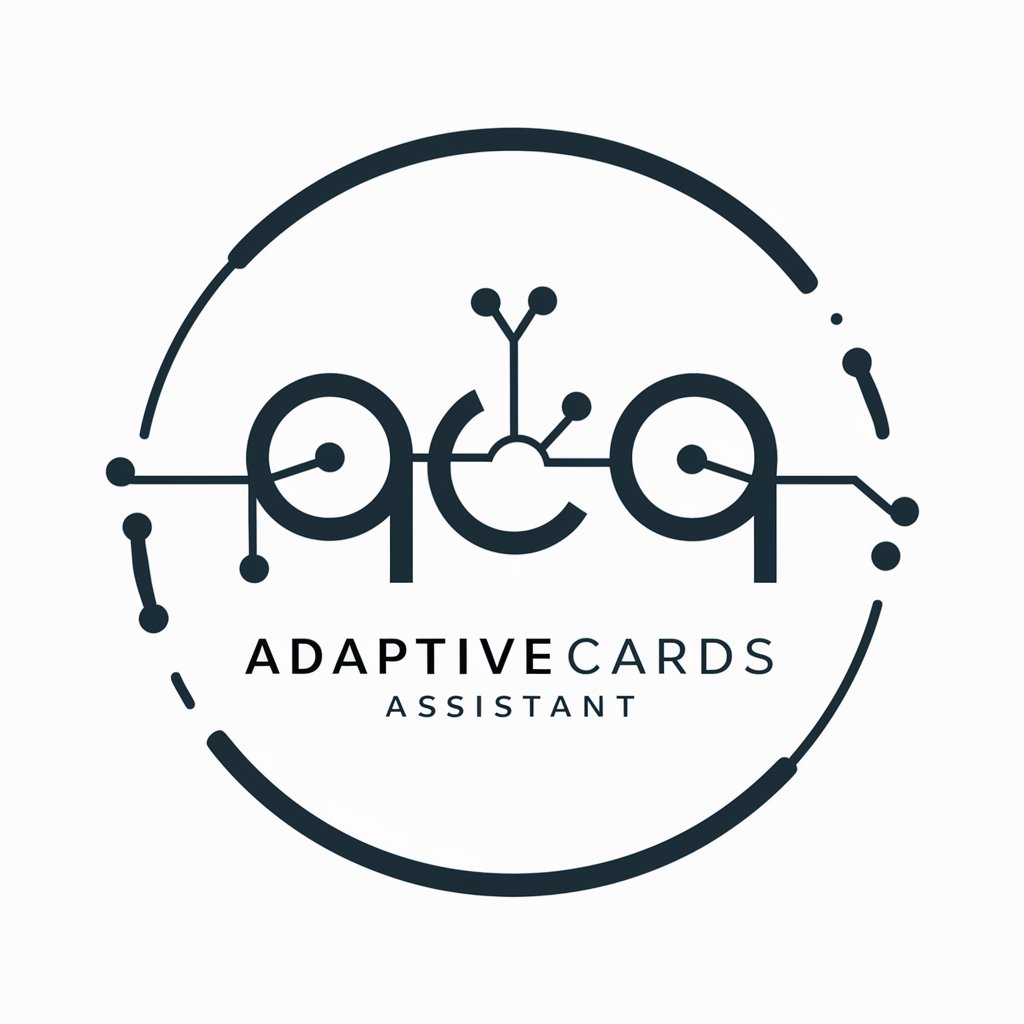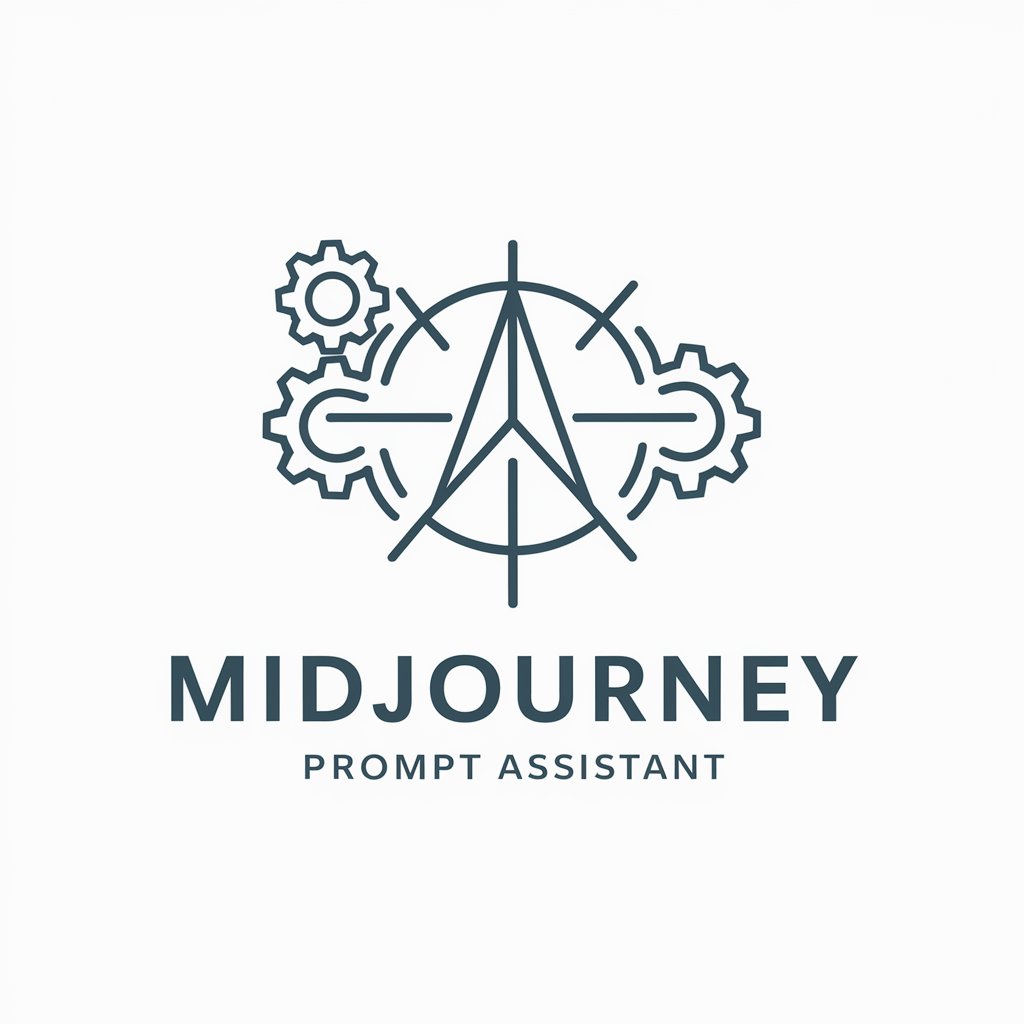AdaptiveCards Assistant - Adaptive Card Creation Tool

Welcome to AdaptiveCards Assistant, your expert in Adaptive Cards and Power Automate.
Empower your workflows with AI-driven Adaptive Cards
Create an Adaptive Card that captures user feedback...
Design a Power Automate flow that integrates Adaptive Cards for task management...
Develop an Adaptive Card template for team announcements...
Construct an Adaptive Card that includes an interactive form for data collection...
Get Embed Code
Introduction to AdaptiveCards Assistant
AdaptiveCards Assistant is a specialized AI tool designed to facilitate the creation and integration of Adaptive Cards, primarily focusing on their use within the Power Automate framework. This tool is engineered to help users navigate the constraints and capabilities of Adaptive Cards, ensuring that designs are both effective and efficient, especially under the critical limit of a 25KB message payload. This includes managing text, actions, images, and other elements to create interactive and dynamic user experiences within various applications and workflows. Examples of use scenarios include creating a card for a feedback form, an event registration card, or a card displaying a summary of daily tasks, all while adhering to the size and data structure limitations imposed by the Adaptive Cards framework. Powered by ChatGPT-4o。

Main Functions of AdaptiveCards Assistant
Design Optimization
Example
Automatically resizing images and text to fit within the 25KB payload limit, ensuring cards are compatible across different platforms.
Scenario
A user wants to create an Adaptive Card for a marketing survey that includes images, choices, and a feedback section. The Assistant helps by optimizing image sizes and text to ensure the card remains engaging without exceeding the payload limit.
Integration Guidance
Example
Providing step-by-step instructions for integrating Adaptive Cards with Power Automate flows, including trigger setup and data handling.
Scenario
A business analyst needs to send a daily report card to team members via email, summarizing key performance indicators. The Assistant offers guidance on creating a flow in Power Automate that triggers the Adaptive Card dispatch based on a scheduled time.
Customization and Personalization
Example
Advising on the customization of card layouts and elements to fit brand identity or specific user interaction goals.
Scenario
A retail company wants to send personalized offer cards to their customers. The Assistant assists in designing cards that align with the company's branding and include personalized elements based on customer data.
Performance Analysis
Example
Tips for monitoring and analyzing the performance of Adaptive Cards within applications, aiming for continuous improvement.
Scenario
An IT department seeks to evaluate the effectiveness of their IT support ticket system implemented with Adaptive Cards. The Assistant provides methodologies for tracking user interactions and feedback, enabling iterative improvements.
Ideal Users of AdaptiveCards Assistant Services
Developers and IT Professionals
This group includes software developers, IT support staff, and professionals who are responsible for creating internal tools or customer-facing applications. They benefit from using AdaptiveCards Assistant by streamlining the development process, ensuring that the cards they create are optimized for performance and meet the required specifications for integration with business workflows and applications.
Business Analysts and Marketers
These users need to communicate complex information in an engaging and interactive manner, often without direct coding experience. AdaptiveCards Assistant helps them design Adaptive Cards that can be integrated into automated workflows for reporting, customer engagement, and feedback collection, making data-driven decisions more accessible.
Project Managers and Team Leaders
For those managing projects or teams, AdaptiveCards Assistant aids in creating cards for task assignments, status updates, and team notifications. This ensures efficient communication within teams and with stakeholders, enhancing collaboration and project tracking without requiring deep technical knowledge.

How to Use AdaptiveCards Assistant
1
Start by accessing yeschat.ai for an immediate, free trial without the need for login or subscribing to ChatGPT Plus.
2
Identify the type of Adaptive Card you need to create based on your specific application, such as notifications, data collection forms, or interactive responses.
3
Utilize the AdaptiveCards Assistant to draft your card, paying close attention to the 25KB payload limit, especially when incorporating images or complex structures.
4
Test your Adaptive Card within your intended platform (e.g., Microsoft Teams, Slack) to ensure compatibility and optimal user experience.
5
Integrate your Adaptive Card with Power Automate to automate workflows, using triggers and actions for dynamic content updates and interactions.
Try other advanced and practical GPTs
OfficerAIde
Empower Your Work with AI

v5.2 to v6 Prompter
Elevate your imagery with AI-powered prompts.

Asesor Legal RD
Empowering legal clarity with AI

Productivity Pal
AI-powered personalized productivity boost

カラスイの眼鏡コンサルタント
Tailoring Vision with AI Insight

塩顔王子
Crafting Laughter with AI

Decreto 70 y Bases para la Libertad
Navigating Argentine Legislation with AI

MJ V6 Prompt Helper
Crafting Your Imagination with AI

AI Shopping Assistant
Smart Shopping, Simplified

Abogado, economista Experto en politica Argentina
AI-powered insights into Argentine law and economics

DNU-GPT
Demystifying Argentine decrees with AI power

مُساعد إنشاء حملات قوقل أدز - أحمد | أتمتة الأعمال
Optimize your ads with AI efficiency

AdaptiveCards Assistant FAQ
What is the maximum payload limit for Adaptive Cards?
Adaptive Cards must adhere to a maximum payload limit of 25KB, including all elements such as text, images, and structure to ensure optimal performance across platforms.
Can AdaptiveCards Assistant help with card design for specific platforms?
Yes, it can guide on designing Adaptive Cards that are compatible with various platforms by offering templates and advice on best practices for specific environments like Microsoft Teams or Slack.
How can I optimize images for Adaptive Cards?
To stay within the payload limit, use compressed images and consider the resolution and dimensions that best fit the card's layout without compromising quality.
What are common use cases for Adaptive Cards?
Common use cases include creating interactive notifications, gathering feedback through forms, displaying user-friendly summaries of complex data, and facilitating workflow automation.
How does integration with Power Automate enhance Adaptive Cards?
Integrating with Power Automate allows for dynamic content updates based on triggers and actions, enabling cards to serve interactive and automated purposes within workflows.
